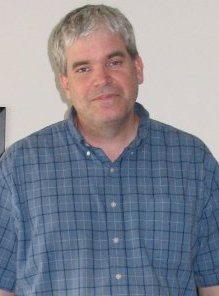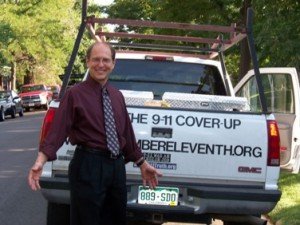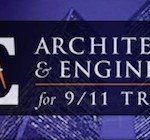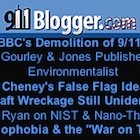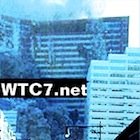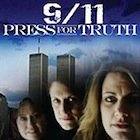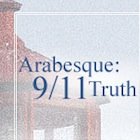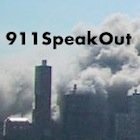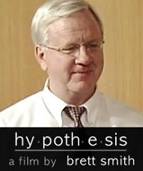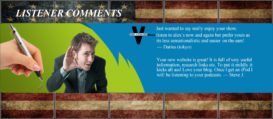 In December of 2006, and after watching the effects of the 9-11 dust on first responders and even rescue dogs for more than a couple of years, I decided it was imperative to do and expose` on the issue of the aftermath of the pulverization of the Twin Towers. The mainstream media was ignoring the issue and the government cronies were doing little more than paying lip service to the increasingly sick and dying hero’s of 9-11: The first responders. Together with many other activists on this issue, we were successful in bringing the plight of the first responders into the mainstream for much needed publicity and help. However, much work is still needed to draw more attention and accountability for the lies of the Bush Regime and the EPA, and to get much needed help for the real hero’s of September 11th. Rudy Guiliani, you are not one of them.
In December of 2006, and after watching the effects of the 9-11 dust on first responders and even rescue dogs for more than a couple of years, I decided it was imperative to do and expose` on the issue of the aftermath of the pulverization of the Twin Towers. The mainstream media was ignoring the issue and the government cronies were doing little more than paying lip service to the increasingly sick and dying hero’s of 9-11: The first responders. Together with many other activists on this issue, we were successful in bringing the plight of the first responders into the mainstream for much needed publicity and help. However, much work is still needed to draw more attention and accountability for the lies of the Bush Regime and the EPA, and to get much needed help for the real hero’s of September 11th. Rudy Guiliani, you are not one of them.
-Michael
Anger builds over EPA’s 9/11 report
Charges of a cover-up hit nerve with New Yorkers
By Francesca Lyman
msnbc.com contributor
Sept. 11, 2003 — Two years after the World Trade Center attacks, New Yorkers say they’re outraged by reports that the White House influenced the Environmental Protection Agency to downplay hazards posed by the toxic dust that fell in an avalanche over the city. The EPA’s acting chief defends the agency’s actions after the attacks, saying it hopes to be better prepared for “the next time.”
“I pray to God that, as a country, in the event of another terrorist attack, God forbid, we as an agency would be equipped to get the data analyzed and posted to the public,” EPA Acting Administrator Marianne Horinko told MSNBC in an exclusive interview. “All that was a huge challenge to us on 9/11 — coordinating communication among agencies, following incident command. God forbid there is a dirty bomb. I hope everyone knows their battle stations.”
In the early days and weeks of the World Trade Center disaster, says Horinko, there was such chaos that mistakes were inevitably made.
 “Did we rush out (too soon) with data? On balance, I think we used our best professional judgment in an atmosphere where people were clamoring for answers.” But the agency wasn’t trying to deceive the public, she claims.
“Did we rush out (too soon) with data? On balance, I think we used our best professional judgment in an atmosphere where people were clamoring for answers.” But the agency wasn’t trying to deceive the public, she claims.
However, a report by the EPA’s Office of the Inspector General released on Aug. 21 states, among other criticisms, that the White House reviewed and even changed EPA statements about public health risks to make them sound less alarming. The report charges that the White House Council on Environmental Quality influenced “the information EPA communicated to the public through its early press releases when it convinced EPA to add reassuring statements and delete cautionary ones.” The report cites “reopening Wall Street” and “national security” as reasons for the spin.
‘We were all lied to’
The EPA presented “an overriding message that there was no significant threat to human health” even though there was cause for caution, it concluded.
“When EPA made a September 18 announcement that the air was ‘safe’ to breathe, it did not have sufficient data and analyses to make such a blanket statement,” said the OIG, adding that the agency was missing data on other pollutants, such as particulates and chemicals like PCBs. In addition, 25 percent of dust samples contained asbestos, a potent carcinogen.
Yes, Horinko admits, the EPA did find asbestos in the dust samples. “But the vast majority of the samples we took did not contain it,” she says.
Asked about why people are still suffering ill effects, Horinko said she can understand that rescue workers would still be affected but finds residents’ continued complaints to be “mystifying.”
Even though the the building collapses caused the highest particulate count in the city’s history, the tragic event violated no pollution standards. That’s because the air quality regulations were set up to measure particulate matter loadings over 24-hour periods rather than intense, short-term bursts.
That is cold comfort to many New Yorkers, particularly those still suffering health effects from exposure to the dust.
Kim Todd, an acting coach who lives in lower Manhattan just two blocks from the former World Trade Center, says she’s angry. “I might not have stayed down here — with dust on me for days — had I known of the dangers,” she says. “We were all lied to, and I’m afraid everybody is going to be seriously sick.”
Some fear that “WTC cough,” sinus problems, headaches and other ailments that Todd and others continue to experience, were worsened by government officials more willing to return the city to normalcy and open the Stock Market than protect public health. Doctors, too, worry the event could spur a rash of asbestosis, cancer and other long-term diseases in the future.
Many workers still sick
“For me, it’s very scary. We lost another firefighter, and that makes one in New York and two volunteers who have died of pneumonia. My lungs are totally shot, and I’m afraid that’s what many of us are going to die of,” says Vincent Forras, a volunteer firefighter who answered the call for help, driving down from South Salem, N.Y., to Ground Zero that clear, blue-skied morning on Sept. 11.
Forras and thousands of other rescue workers on “the pile,” who were largely unprotected in those first hours and days, are still sick. Workers got little more than paper masks, if that, and there weren’t enough respirators to go round, recalls Forras, who still suffers severe headaches and ailments stemming from sinus surgery. “It took at least two weeks to get properly equipped. By then we were pretty well cooked.”
“There was a lot of finger-pointing about who was in charge,” says Joel Shufro, director of the New York Committee for Occupational Safety and Health. “But in the confusion between EPA and the Occupational Safety and Health Administration and the city Health Department, laws weren’t enforced.”
Workers have to bear some of the blame, says Horinko. “Many did not wear professional gear despite our best efforts.”
But, Forras says, even Mayor Rudolph Guiliani appeared to believe the EPA’s statement and went so far as to stand next to then-EPA administrator Christie Whitman and announce that the air was safe.
“When you have someone of the caliber of Mayor Guiliani saying it, they took that as gospel,” says Forras.
Not all New Yorkers believed that the smells wafting up from the smoldering remains of the two 110-story office towers were as benign as official pronouncements.
“How could something as huge as the World Trade Centers with all their contents — computers, fluorescent lights, plastic chairs, everything — just disappear?” says Todd. “They had to go somewhere.”
Workers at Ground Zero got much higher doses of dust and fumes than residents, says Dr. Robin Herbert, a physician and researcher at Mt. Sinai Hospital who worked on a program that screened and treated rescue workers and volunteers at the site. A year after the attacks, half of the program’s patients — some 7,000 firefighters, police officers and other volunteers — were still sick. While the final count is not in, says Herbert, “a substantial percent continue to have persistent upper and lower respiratory symptomatology — coughs and sinus problems.”
Toxins may linger
Two years after Sept. 11, some downtown New Yorkers are still concerned about the potential toxicity of lingering dust in indoor areas, says Jenna Orkin, of 9/11 Environmental Action, a group formed to address issues many felt literally slipped through the cracks after the disaster when the EPA turned indoor air issues over to the city Department of Health.
After Rep. Jerrold Nadler (D-N.Y.) held hearings on the health hazards triggered by the terror attacks, the EPA and city launched a program to clean up people’s apartments, ultimately cleaning more than 4,000 apartments in lower Manhattan. But that program left out the cleanup of schools, offices, workplaces, shops and businesses — and that’s only the beginning of how “wholly inadequate” the program was, Nadler told MSNBC.
“The program was limited to an area south of Canal Street, as though there were a Star Trek force field blocking out the rest of Manhattan and other places, like Brooklyn, where we know the toxic plume traveled,” says Nadler.
The EPA tested and cleaned individual apartments only when people asked, and generally left out central air systems and common areas. “How can you clean one apartment, and not the one next to it?” Nadler asks.
Apartments were tested for only one pollutant: asbestos. The testing method used excluded active testing, which uses a fan to kick up the pollutants lurking in carpets, drapes and corners, unless applicants opted for the most aggressive cleanup, which prohibited the resident from being present (and, some say, discouraged many people from signing up).
Jo Polett, who lives 6 blocks from the trade center site, however, insisted on supervising her job, and made the contractor turn on the “active” test fan when he didn’t even know to. With effort, she learned that her apartment was contaminated with heavy metals, such as antimony and lead (with the lead reading five times the EPA’s standard). Had she opted for “testing only” — which tested only asbestos — she might never have found that out.
Polett, who speaks softly with her new whispery voice, blames her respiratory problems on the toxic dust trapped in her building’s ventilation system. Yet, because there was no visible dust in her apartment, she never suspected a problem until several months after the disaster. Too late, her home was judged “uninhabitable” by FEMA, she said. “I’m frightened by what other people might also be living with,” says Polett.
In a press conference, Nadler also release a memo by EPA scientist Cate Jenkins, a veteran of the Hazardous Waste division, saying that even the most rigorous EPA-led efforts have failed to clean up downtown buildings to federal levels for asbestos and silica, another carcinogen that, she says, could be implicated in “WTC cough.”
Jenkins’ memo states that a building at 114 Liberty Street still has visible dust. She has said that the EPA tested its own offices downtown with more stringent methods. The city Department of Environmental Protection did not return calls regarding its joint cleanups with the EPA, but Jordan Bailowitz in Mayor Michael Bloomberg’s office said, “The city is not responsible for oversight of what EPA had done to clean up apartments.”
New cleaning efforts urged
Siding with Nadler on this issue, the OIG has urged the EPA to re-launch a new systematic program to make sure the agency’s apartment cleaning does reduce residents’ exposure to indoor pollutants. The OIG notes that in this case, as in future terrorist events, the EPA is tasked under a 1998 Presidential Decision Directive “with the leadership role in cleaning up buildings and other sites contaminated by chemical or biological agents as a result of terrorism.”
But the EPA’s Horinko doesn’t think that’s necessary. “We stand by the job we managed in testing and cleaning up people’s apartments,” she says.
It’s too soon to say if the World Trade Center attack will have long-term health effects on New York residents, says the OIG report, although there are troubling signs. Pregnant women exposed to air pollution from the World Trade Center attacks, according to a preliminary study released in August 2003, face double the risk of delivering babies up to a half-pound smaller than babies born to women not exposed.
Doctors are still treating patients with post 9-11 respiratory problems, says Neal Schachter, a pulmonologist at Mt. Sinai. During the first year, he saw perhaps 15 percent more such patients, but that’s tapering off to between 5 percent to 10 percent more now.
“But I still get a steady stream of patients, including new ones,” he says.
Schachter also worries about the long-term consequences of the pollution that we have yet to see. “With asbestos, as well as other carcinogens, we’re dealing with silent culprits, that have yet to wind up scarring lungs or causing cancer,” he adds.
For some, the OIG report shook their confidence in government. “Accurate and timely information from government is a cornerstone of good public health,” says Mt. Sinai’s Herbert. “By deleting good information to the public — people in their apartments, people on the pile — we lost opportunities for disease prevention.”
Francesca Lyman is an environmental and travel journalist and author of “Inside the Dzanga-Sangha Rain Forest” (Workman, 1998). She recently finished a report on the health effects of the Sept. 11 attacks titled “Messages in the Dust,” which will be available online at www.neha.org.
Original article here.
